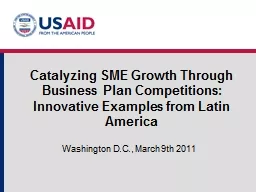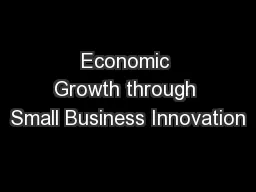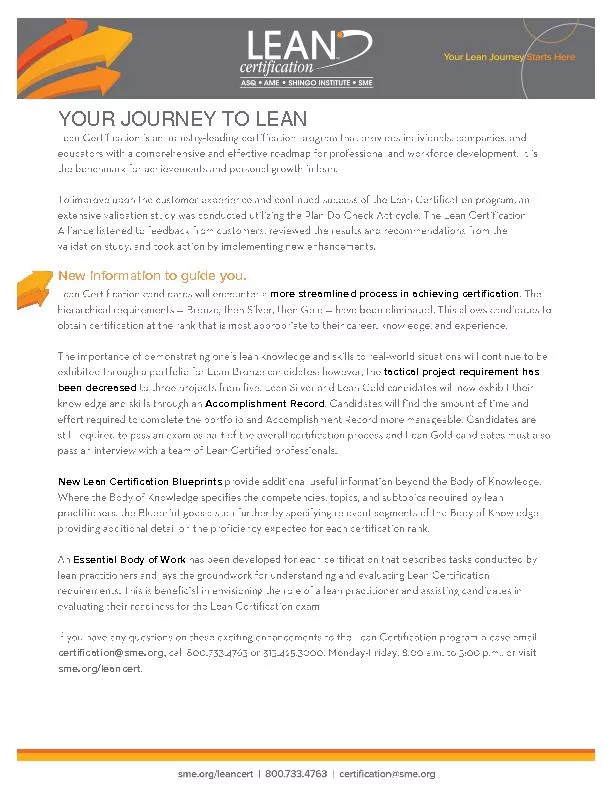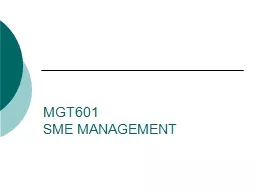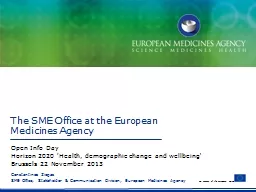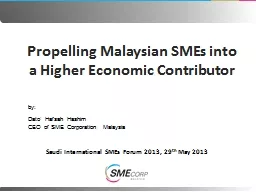PPT-Catalyzing SME Growth Through Business Plan Competitions: I
Author : sherrill-nordquist | Published Date : 2015-10-11
Washington DC March 9th 2011 Who we are 1 Background The role of entrepreneurship in poverty reduction The problem at hand and Evaluation of Methodology Strategic
Presentation Embed Code
Download Presentation
Download Presentation The PPT/PDF document "Catalyzing SME Growth Through Business P..." is the property of its rightful owner. Permission is granted to download and print the materials on this website for personal, non-commercial use only, and to display it on your personal computer provided you do not modify the materials and that you retain all copyright notices contained in the materials. By downloading content from our website, you accept the terms of this agreement.
Catalyzing SME Growth Through Business Plan Competitions: I: Transcript
Washington DC March 9th 2011 Who we are 1 Background The role of entrepreneurship in poverty reduction The problem at hand and Evaluation of Methodology Strategic planning Access to capital. 2014 season. TERMS. AND CONDITIONS. Championships. Delegations. EUBC. . (President, ED, 1 staff). Supervisor . and ITOs. R&Js. Appointment. By EUBC. By AIBA. . (Men Championships). By NFS for Others. Entering. Homebrewing. Competitions. Brew Your Beer. Choose Style. Develop Recipe (Most Competition are BJCP, or Brewer . Association Sponsored). Some Competitions have . “Fun. ” or “Novelty” Categories (but . The “Small Business Act” for Europe and its Review. Maria Pia Vigliarolo – . DG Enterprise and Industry – Small Business Act, SME Policies. What is an SME ?. http://ec.europa.eu/enterprise/policies/sme/facts-figures-analysis/sme-definition/index_en.htm. FIN-EN Meeting. Sharing. . Methodologies. . on. Financial . Engineering. for . Entreprises. Lisbon. , 26 . September. 2013. Miguel Sousa Branca. SPGM . Executive. . Board. . Member. FILL THE MARKET GAP ON SME DEBT FINANCING …. Barbara Freeman. CEO and Founder . SME Global. . Group. Most Will Come from High-Growth SMEs in Emerging Markets. 600 Million New Jobs Needed Over the Next 20 Years. Source: WDR 2013 team based on data from ILO and World Development Indicators.. Education certification@sme.org Leadership sme.org/leanregistryame.org/volunteer shingoprize.org asq.org Gemba sme.org/bronzepackagesme.org/silverpackage sme.org/goldpackage Feedback sme. Case Study 2. RISE SME Graduate Scheme. for Sheffield . The Problem- SME Market Failure . Too many of SCR’s 19,000 graduates are not utilised by the city region’s business base. A survey in 2013 by the LEP showed that only 18% of Small and Medium Sized Enterprises (SMEs) % employ graduates. This falls to 17% for businesses who employ less than 50 people. . Olivia Gedney. 8OR. Where?. When?. I do ice skating at Whitley Bay Ice Rink. I go the every Sunday, Tuesday, Thursday and Saturday. . I have to wake up at 5:30 and I have to go before school. . Who can go?. The “Small Business Act” for Europe and its Review. Maria Pia Vigliarolo – . DG Enterprise and Industry – Small Business Act, SME Policies. What is an SME ?. http://ec.europa.eu/enterprise/policies/sme/facts-figures-analysis/sme-definition/index_en.htm. 47 Clubs 24 Women’s Competitions 14 Men’s Competitions 60 + Junior Club Competitions 9,595 Junior Age Club Players 40 Boys Teams 271 Girls Teams 10 Inter-Provincial Squads 600 + players at Development Programmes The Role of NGOs. Chapter Learning Objectives. This lecture will throw light on the role of NGOs in development of SMEs in Pakistan. . Defining NGOs. NGOs stands for Non-government Organizations. . Constantinos Ziogas. SME Office, Stakeholder & Communication Division, European Medicines Agency. Open Info Day. Horizon 2020 'Health, demographic change and wellbeing‘. Brussels 22 November 2013. a Higher Economic Contributor. Saudi International SMEs Forum 2013, 29. th. May 2013. b. y:. Dato’ Hafsah Hashim. CEO of SME Corporation Malaysia. Definition of SMEs. Annual sales turnover. < RM25 million. Opatija. , Croatia. AA/MCC Workshop . . Academic. . Activities. . Competitions. MCCs. . . John H. Jackson MCC. EHRMCC. ENCs. . CICs. Legal . Debates. Legal . Writing. LRGs. . ELRs. Input/policy papers.
Download Rules Of Document
"Catalyzing SME Growth Through Business Plan Competitions: I"The content belongs to its owner. You may download and print it for personal use, without modification, and keep all copyright notices. By downloading, you agree to these terms.
Related Documents

